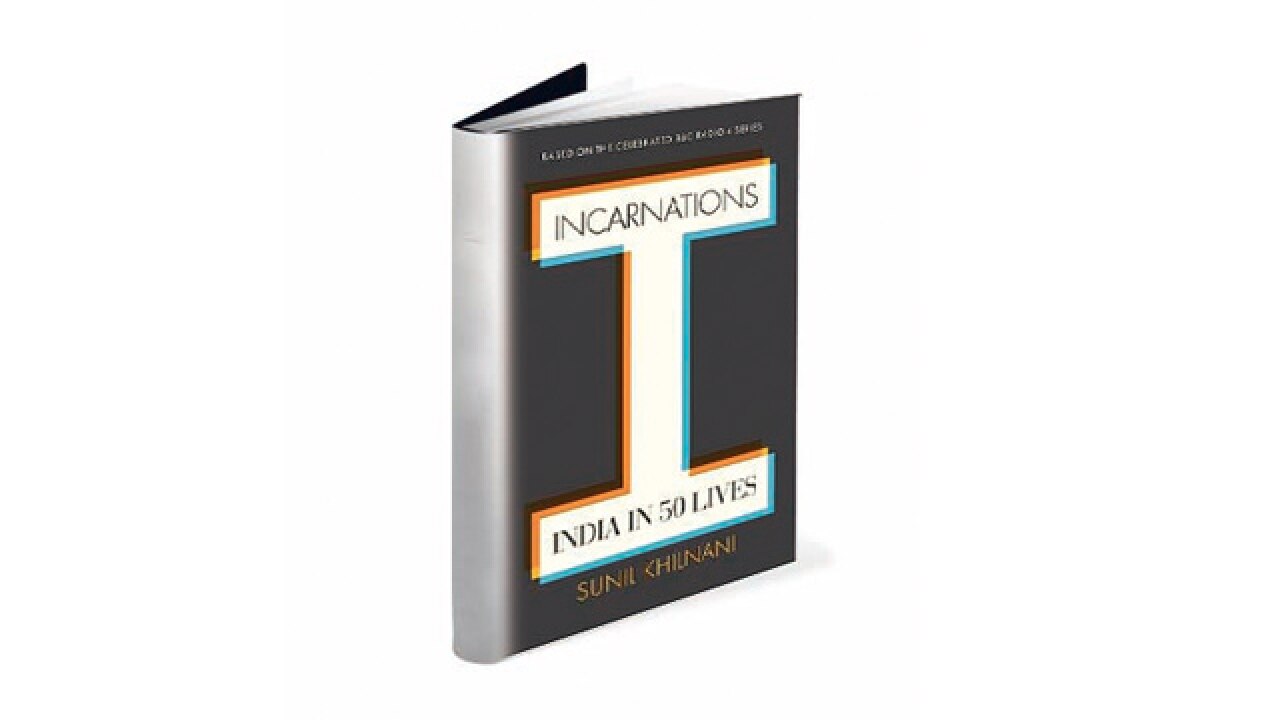
Book : INCARNATIONS INDIA iN 50 LIVES
Author: Sunil Khilnani
Publisher: Allen Lane
Pages: 636
Rs: 699
It's rare for the title of a book to slip into common lingo. Sunil Khilnani's "the idea of India", the title of his 1997 book, is one such example (Amartya Sen's "argumentative Indian" is another). A simple Google search returns 18,70,000 results with the phrase used in all manner of contexts – from newspaper headlines to the name of a photographic project capturing India's syncretic religious traditions.
Incarnations – India in 50 Lives, the title of Khilnani's new book, is quite the contrast.
For the author, however, the word, with all its supernatural connotations of afterlives and rebirths, captures a very essential aspect of what he attempts to do between its covers – tell the story of 2,500 years of Indian civilisation through the lives of 50 individuals, right from the Buddha to Dhirubhai Ambani. It includes the usual suspects such as Ashoka, Akbar, Kabir, Shivaji, Mahatma Gandhi, Jinnah, Indira Gandhi and Satyajit Ray. But, it also has a few suprises such as Sanskrit grammarian Panini, Rajaraja Chola, Nainsukh, Chidambaram Pillai, Birsa Munda, Sheikh Abdullah and Charan Singh. The book itself is an incarnation of a BBC Radio 4 series (and podcasts) that Khilnani was commissioned to do; the first tranche of 25 lives was broadcast last year, the last 25 are being broadcast now.
Director of the acclaimed King's India Institute at King's College, London, and an authority on modern Indian history, Khilnani is conscious that academic historians would probably deride Incarnations... as pop history. But for him, he says, it was an "interesting challenge" to tell the history of India to a "broader audience", which include people who don't know much about India, as well as those in India who'd be very familiar with some of it.
Khilnani puts in all the details of the wheres, and the whats, and the whos of the personalities that he includes, but that's not the point of the exercise. What interests him more is what he calls their "afterlives" – the way they linger on in popular memory, or the manner in which they have been appropriated by subsequent generations.
The chapter on Buddha, for instance, begins with a Buddhist temple inside a slum in Mumbai. Khilnani visits the city often thanks to wife Katherine Boo's continuous engagement with slum dwellers, the subject of her 2012 book, Behind the Beautiful Forevers. It's a neat ploy. To situate the Buddha in modern times, because it serves to drive home, like no other historical detailing would have done, just how revolutionary he was in those times which we know so little about and why he became such a radical icon for Ambedkar and his Dalit followers.
It was also a lot of hard work, and over the years, Khilnani has lost count of the many miles he's logged in travelling "from Tuticorin to Shigeri to Santiniketan to Dandi to Jhansi to Benaras to Kanaganahalli to Hampi". It was important, he says, to see the places associated with the personalities recorded in his book to get a sense of the spirit of what they were. "When you look out from the Raigad Fort and see the kind of landscape that Shivaji conquered, you sense, this was something!"
Sometimes, going down to the ground elicits surprising insights. "I was in Dandi a few months ago, and really, it's quite desolate," says Khilnani. "What was Gandhi thinking when he was going there? And in 1930, to get international cameramen to come with him!" It brought on appreciation of a new aspect of the Mahatma that few of us consider of him – that of a media manager. "We see him as this unwordly, spiritual paragon. But he was an incredibly sharp operator with the media. The whole Dandi March was managed like a branding exercise by Steve Jobs – choosing who's going to march with him, what they're going to wear, his own position in the march, getting people to go ahead to the villages and whip up excitement so that it looked good," says Khilnani, emphasising that his objective in writing about this aspect of Gandhiji was not to run him down, but to show how extraordinary he was for his time.
Strangely, Jawaharlal Nehru – whom Khilnani saw as being central to the way India developed in the first decades after independence in The Idea of India, and whose biography he's said to be working on – doesn't figure in this list of 50 lives. "I've had plenty of opportunity to write and talk about Nehru," he says dismissively.
But what he does feel passionate about is the way Nehru's "idea of India" as a space for "conversation, debate, argument, contestation" is giving way to another view of Indian nationalism. Khilnani finds the notion of nationalism being tied to a single culture "incredibly colonial, provincial 19th century European view. The bizarre thing is that we think this should be our view, when we have a more interesting view of nationalism, where pluralism and diversity are a strength, not a threat."